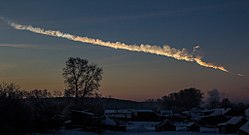External links
- (163364) 2002 OD20 at AstDyS-2, Asteroids—Dynamic Site
- (163364) 2002 OD20 at ESA–space situational awareness
- (163364) 2002 OD20 at the JPL Small-Body Database
2013 in space | ||||||
|---|---|---|---|---|---|---|
| Space probe launches |
| |||||
| Impact events | ||||||
| Selected NEOs | ||||||
| Exoplanets |
| |||||
| Discoveries |
| |||||
| Novae | ||||||
| Comets | ||||||
| Space exploration |
| |||||
| | This near-Earth asteroid-related article is a stub. You can help Wikipedia by expanding it. |


